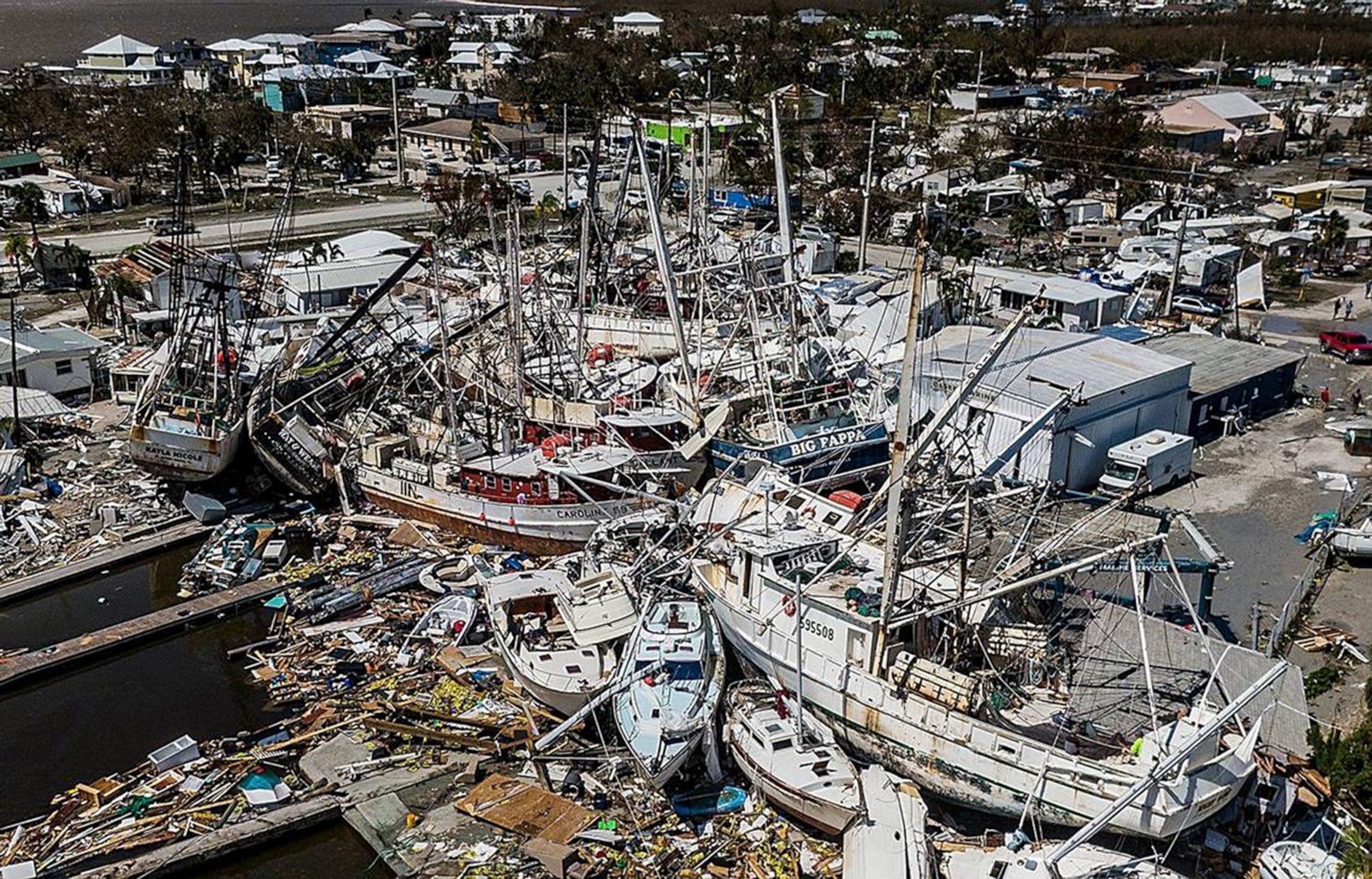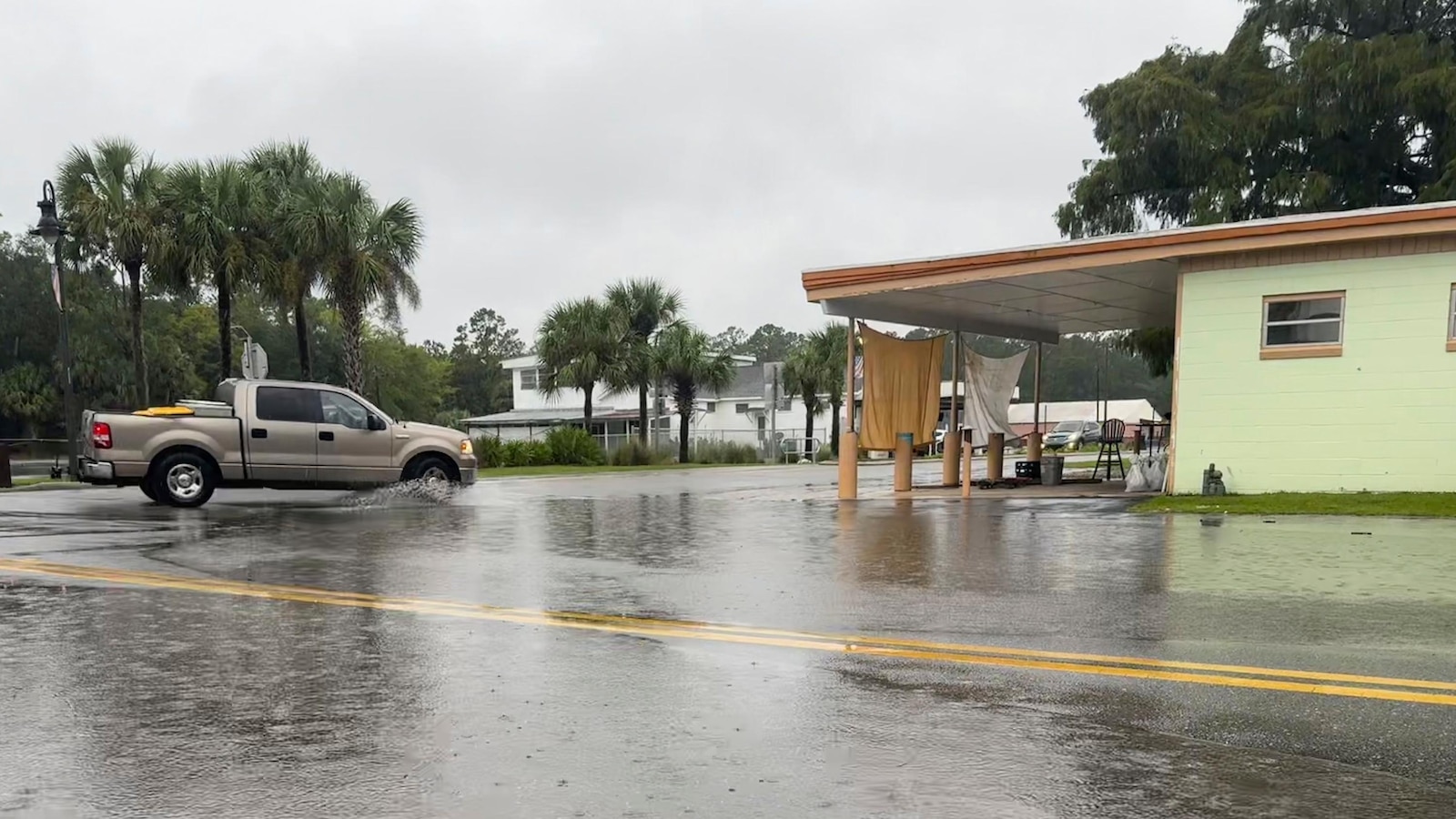With Hurricane Helene intensifying on its path to hit Florida as a major storm, residents and officials are preparing for impact as reminders from 2022’s deadly and destructive Hurricane Ian remain in the Gulf Coast.
Helene is forecast to become a Category 4 hurricane with 130 mph winds by the time it makes landfall Thursday night, prompting emergency declarations, school closures and evacuation orders in parts of the state.
But as the latest weather catastrophe nears, the shadow of 2022’s deadly and destructive Hurricane Ian looms over Florida’s still recovering Gulf Coast in the southwest region of the state.
Nearly two years ago to the day, Hurricane Ian made landfall near Cayo Costa, Florida, a small island west of Fort Myers, on the morning of Sept. 28, 2022.
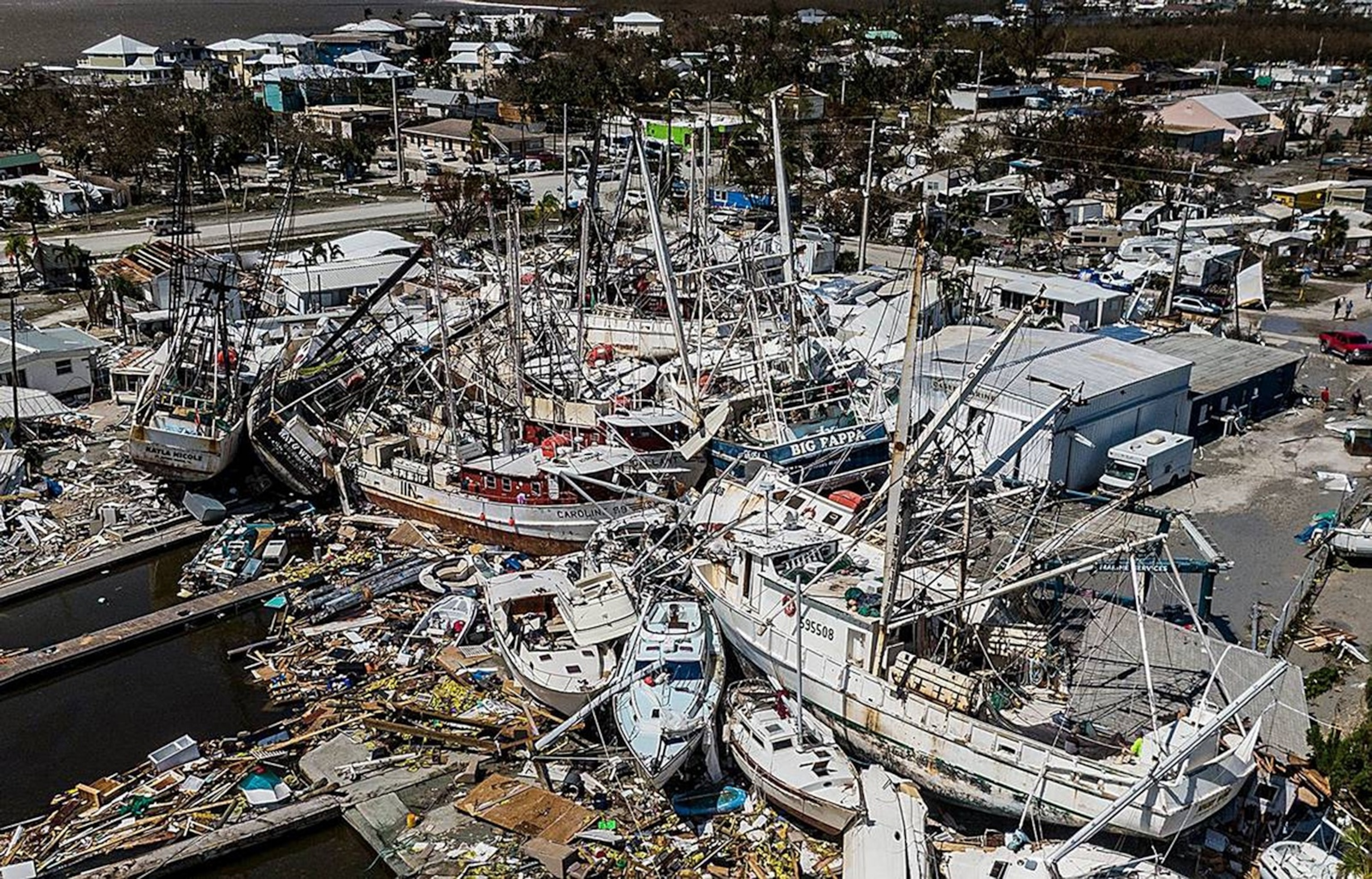
A day after Hurricane Ian hit Florida’s west coast as a Category 4 storm, wrecked ships (mostly shrimpers) can be seen at San Carlos Island in Fort Myers Beach on Sept. 29, 2022.
Pedro Portal/Miami Herald/TNS via Getty Images
Ian made impact as a Category 4 storm with 150 mph sustained winds and an onslaught of rain and storm surges that became one of the most powerful and deadly hurricanes in Florida’s history.
The brunt of Ian’s force was felt on Fort Myers Beach and the state’s barrier islands, Pine Island, Sanibel Island, Captiva and the village Matlacha.
As the storm intensified, barrier island residents were left stranded from mainland Florida when parts of the Sanibel Causeway were destroyed and portions of the Pine Island bridge were partially washed out.
According to the Florida Department of Transportation, reconstruction and safety reinforcement efforts continue on both structures to withstand future storms.
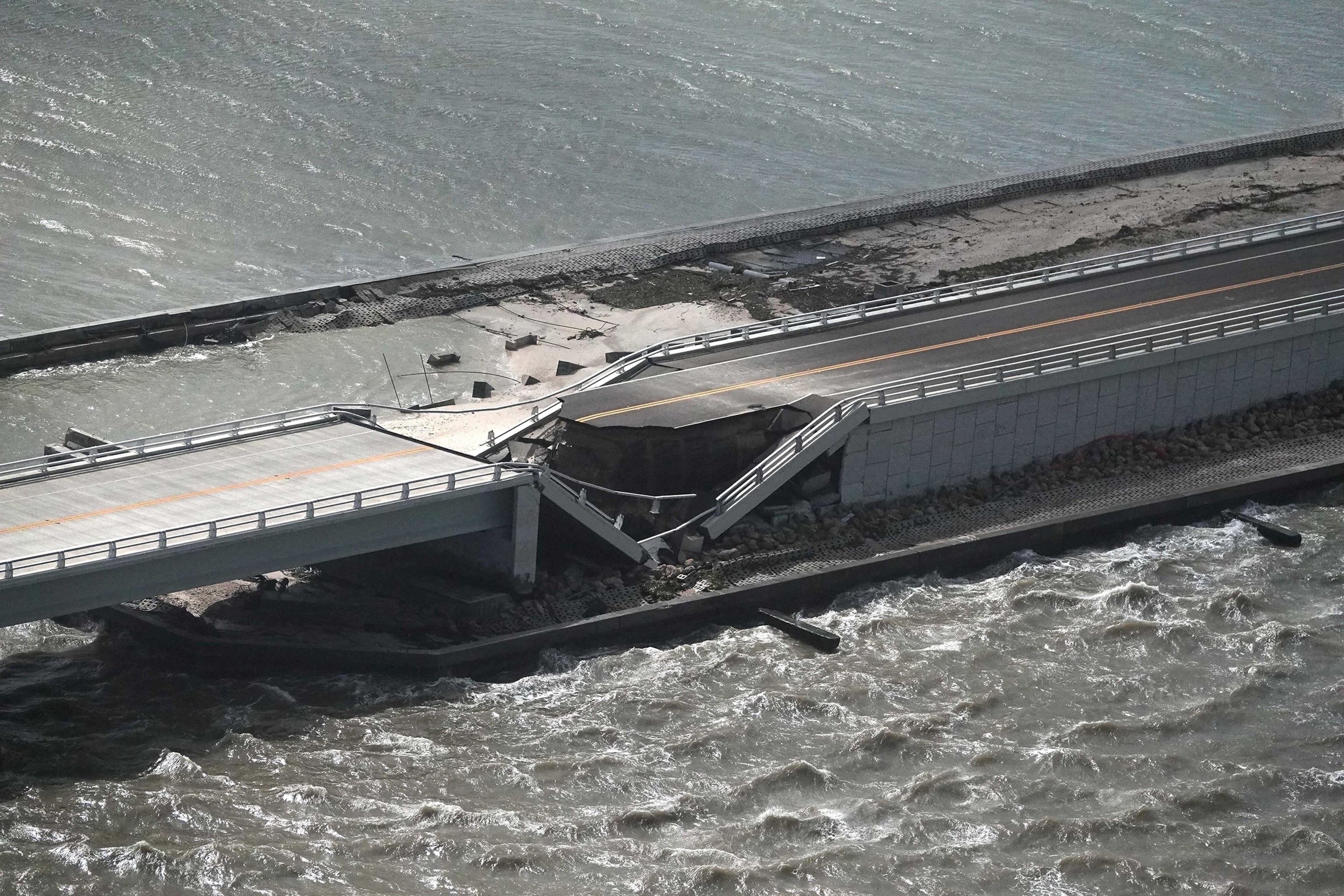
Aerial photo of the damaged Sanibel Causeway that connects Fort Myers to the island community seen in the aftermath of Hurricane Ian in Fort Myers, Fla., Sept. 29, 2022.
Joe Cavaretta/Sun Sentinel/TNS via Getty Images
The power of Hurricane Ian was historic, with a storm surge of 12 to 18 feet above ground level reported along the southwestern Florida coast. The city of Fort Myers experienced a 7.26-foot surge, which became a record high, according to the National Oceanic and Atmospheric Administration (NOAA).
In the days following Ian’s landfall, Florida Gov. Ron DeSantis said at the time that almost 2,500 people were rescued by emergency crews and over 100,000 impacted structures were searched.
Florida’s Medical Examiners Commission confirmed 149 deaths in the state attributed to Hurricane Ian, with most fatalities occurring on the state’s Gulf Coast in Lee County.
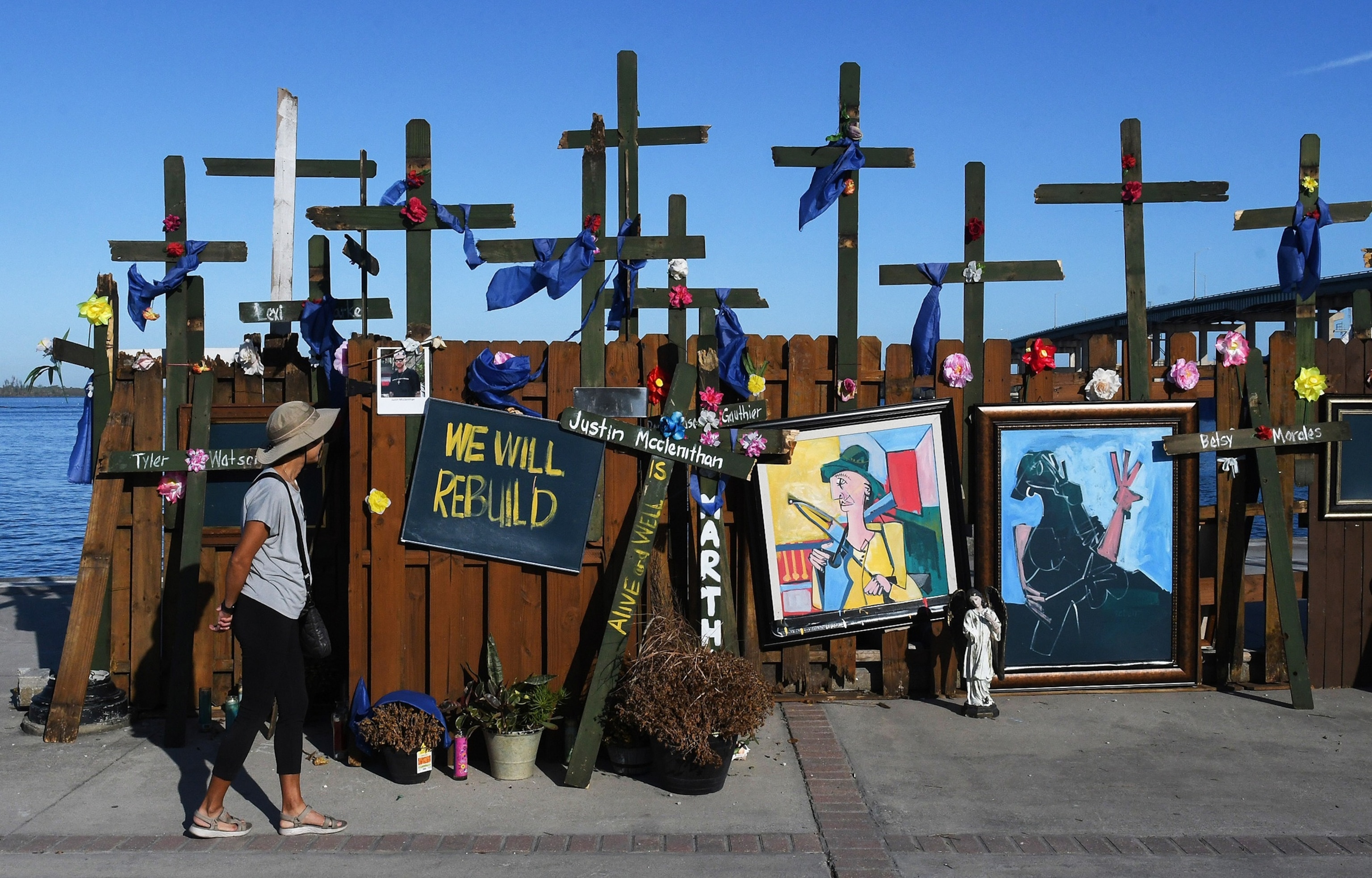
A woman views a memorial wall for victims of Hurricane Ian in Centennial Park in Fort Myers, Fla., Oct. 31, 2022.
Paul Hennessy/LightRocket via Getty Images
Ian became the deadliest hurricane in Florida since 1935 and is the costliest in state history, according to NOAA.
The wake of destruction from Hurricane Ian left a $115.5 billion price tag for cleanup. NOAA ranks Ian as the third costliest hurricane in U.S. history after Katrina in 2005 and Harvey in 2027.
The storm had severe impacts on the state’s power grid, with outages rising to 2.5 million in the state in the days following landfall, according to officials.
Earlier this month, as the second anniversary of Ian’s landfall approaches, the Federal Emergency Management Agency (FEMA) announced a six-month extension on its housing program that continues to support survivors of the storm.
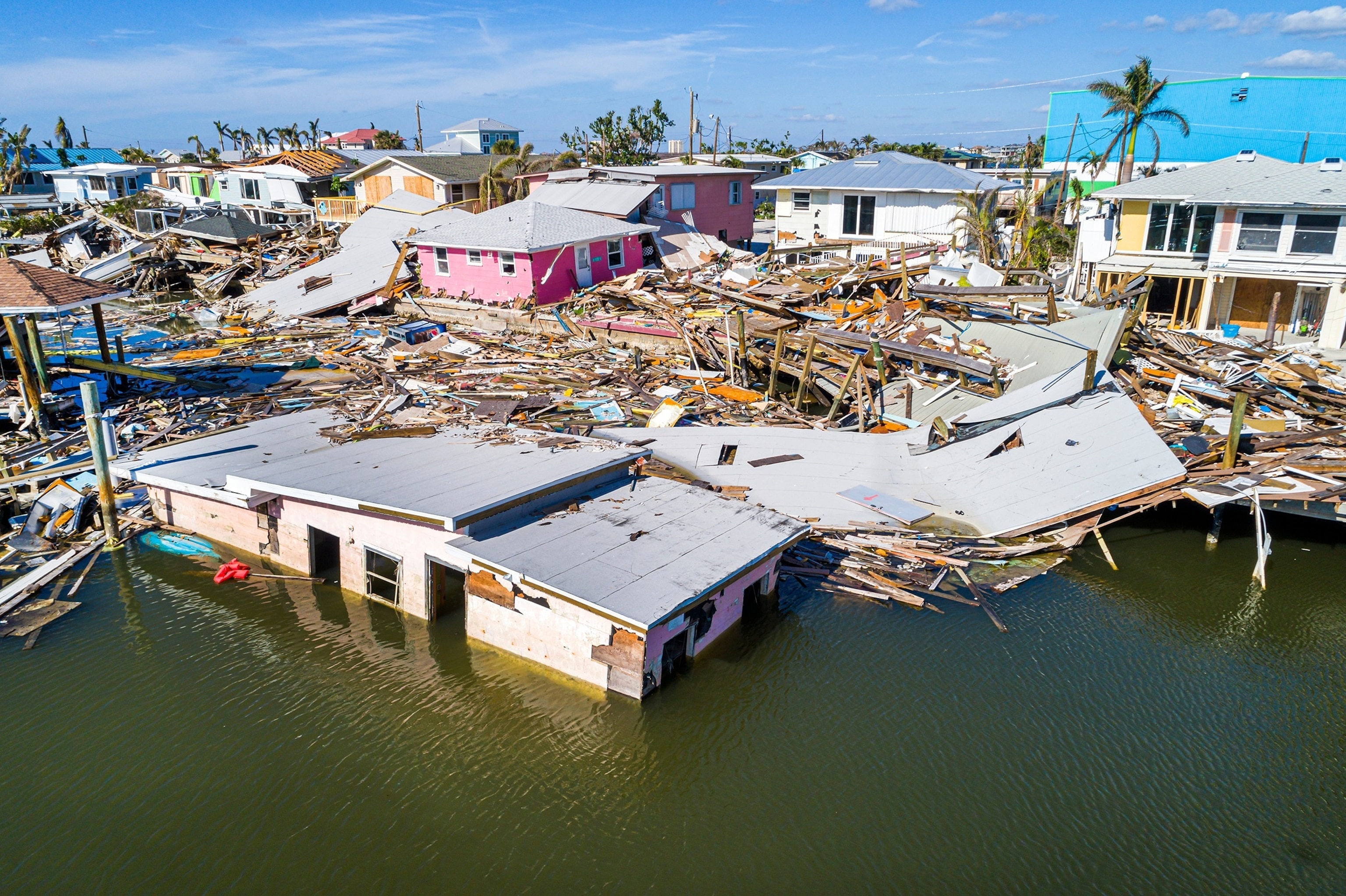
This photo shows an aerial view of damaged property after Hurricane Ian in Fort Myers Beach, Fla., Dec. 2, 2022.
Jeff Greenberg/Getty Images
Since Hurricane Ian, FEMA has provided temporary housing units for more than 1,300 displaced families in the state, while more than 80% of families have found a permanent home, the need for housing assistance in the region remains, according to the agency.
Two years later, federal support for recovery from the storm reached $10.2 billion for households, businesses, communities and flood insurance policyholders, according to FEMA.
On the eve of Hurricane Helene’s forecasted landfall, mandatory evacuations are in effect in parts of at least 20 Florida counties, including Taylor, Sarasota, Gulf and Hillsborough.
Stay up to date on ABC News’ live Hurricane Helene coverage and tracking as the storm progresses.
The Gulf Coast of Florida is no stranger to the devastating impacts of hurricanes, and the 2022 hurricane season has already proven to be a challenging one for residents and officials alike. In particular, the recent hurricane that made landfall on the Gulf Coast has left a trail of destruction in its wake, causing widespread damage to homes, businesses, and infrastructure.
The hurricane, which struck the region in late August, brought heavy rains, strong winds, and storm surges that resulted in flooding and power outages across the area. Many residents were forced to evacuate their homes, while others were left stranded without access to basic necessities such as food and water. The cleanup and recovery efforts have been ongoing, with local authorities working tirelessly to restore services and help those affected by the storm.
As if dealing with the aftermath of one hurricane wasn’t enough, residents of the Gulf Coast now face another potential threat in the form of Hurricane Helene. This powerful storm is currently churning in the Atlantic Ocean and is expected to make its way towards the Gulf Coast in the coming days. While it is still too early to predict the exact path and intensity of Hurricane Helene, officials are urging residents to remain vigilant and prepare for the worst.
In light of these back-to-back hurricanes, it is more important than ever for residents of the Gulf Coast to take proactive measures to protect themselves and their property. This includes securing loose items, stocking up on emergency supplies, and having a plan in place for evacuation if necessary. It is also crucial for residents to stay informed about the latest weather updates and advisories from local authorities.
In addition to individual preparedness, it is essential for communities and local governments to invest in resilient infrastructure and disaster response capabilities. This includes improving drainage systems, strengthening building codes, and developing comprehensive emergency plans to ensure a swift and effective response to future hurricanes.
While the impact of the 2022 hurricane on Florida’s Gulf Coast has been significant, it is important for residents to remain resilient and united in the face of adversity. By working together and taking proactive measures to prepare for future storms, we can minimize the damage and ensure the safety and well-being of our communities.
